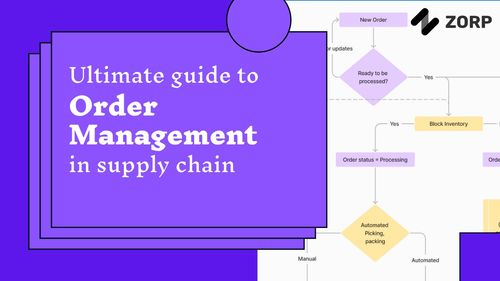A key aspect of sales and distribution success lies in the efficient execution of beat planning or route optimization. A well-planned beat allows your sales team to cover more ground, reduce distribution costs, and improve customer engagement. In this article, we will unveil the best practices in beat planning, highlighting strategies and methods that can help businesses optimize their sales routes and overall performance.
Before diving into the intricacies of beat planning, it is essential to grasp what it entails. Beat planning, also known as route planning or territory management, is the process of organizing, allocating, and balancing a field sales team's workload across given geographical regions. This ensures optimal resource utilization, increased customer coverage, and improved sales efficiency.
The first step towards successful beat planning is defining clear objectives and goals for your sales team. These objectives need to be SMART – Specific, Measurable, Achievable, Relevant, and Time-bound. Goals may include increasing sales, enhancing customer engagement, identifying new business opportunities, or expanding market coverage, among others.
To maximize efficiency, segmenting and prioritizing customers based on their value or potential value to your business is crucial. Such segmentation could be based on order frequency, sales volume, or business potential. This will help your sales team to allocate their time and resources effectively, focusing on the high-value customers while maintaining a healthy balance of new opportunities.
An optimized sales route plays a significant role in maximizing the number of customer touchpoints in a day. Leverage route optimization tools or algorithms to determine the most efficient path, considering factors like travel time, distance, and priority of customers. Route optimization ensures effective time management, reduced fuel expenses, and increased overall productivity.
Ensure that your sales team's workload is equally distributed throughout the week, avoiding any potential bottlenecks on specific days. Factor in aspects like weekly holidays, off days, and customer availability while planning the beat. Also, it is essential to regularly analyze and reassign territories in case of team member attrition or other workload changes.
Regular monitoring and tracking of sales team performance are vital in measuring beat planning's effectiveness. Set performance indicators, such as the number of customers visited, customer retention rates, and revenue generated per beat plan. These metrics can serve as a valuable input for refining and optimizing the beat plan further.
According to a survey by the Sales Management Association, effective sales territory planning can increase sales by up to 30% (Sales Management Association). This underlines the importance of optimizing beat planning to drive business growth.
Mastering route optimization is key to efficient beat planning. Explore our latest blog, where we delve into the strategies and technologies that can elevate your route planning game. Learn how to streamline operations, reduce costs, and enhance overall productivity. Read more: Mastering Route Optimization in Beat Planning.
Modern technology offers numerous software tools and applications that can greatly enhance beat planning efficiency. Employing technology like GPS tracking, route optimization software, and Customer Relationship Management (CRM) systems ensure streamlined beat planning, real-time information access, and quick decision-making.
Equip your sales team with adequate training and support to execute the beat plan effectively. Familiarize them with the route optimization tools and CRM systems and conduct regular reviews to gather feedback and address any issues.
Successful beat planning requires flexibility to adapt in response to changing market conditions, opportunities, or challenges. Be prepared to make necessary adjustments in the beat plan to accommodate sudden customer requests, changes in the sales team, or market trends.
Continuously seek customer feedback to gain insights into their needs and expectations. Use this valuable input to improve and refine your beat plan, leading to enhanced customer satisfaction and increased sales.
Implementing the best practices in beat planning can dramatically impact your sales team's efficiency, leading to increased revenue, strengthened customer relationships, and overall business growth. Companies like ZORP can provide the right tools and solutions to assist with implementing effective beat planning strategies. By leveraging ZORP's technology platform, your business can optimize field and factory team performance, enabling you to stay ahead in today's competitive market.
Revolutionize your beat planning with our comprehensive guide to effective beat planning training! 🚀🗺️ Equip your team with the skills they need to optimize routes and enhance efficiency. Read more: Effective Beat Planning Training Guide

Discover the power of efficient beat planning with ZORP's technology platform. Enhance your operational efficiency and drive business growth today.


